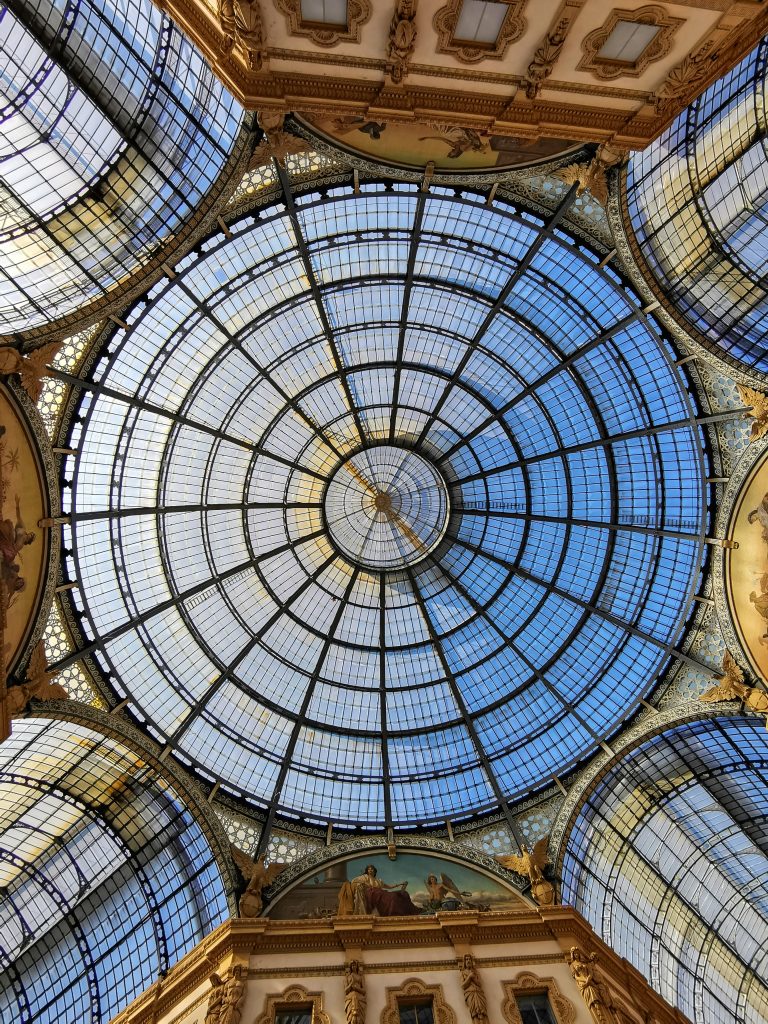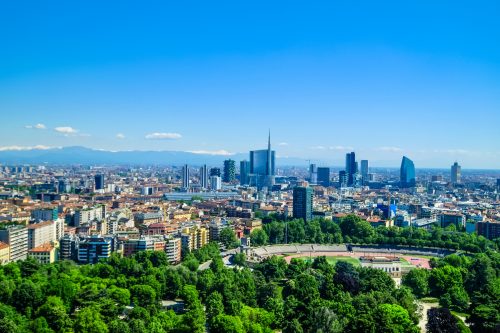The battle for hosting the Eurovision Song Contest in 2022 in Italy began the minute Måneskin won the ESC 2021, in Rotterdam. Earlier this summer, we told you how to make the most of Rome and we told you everything you need to know about Pesaro. These two cities are still in the race to become a hosting city, as well as Milan.
Milan is a city in the north of Italy. The city has the most habitants of Italy, after Rome. Milan is considered a leading global city, with strengths in many fields, like art, commerce, design, education, entertainment finance, healthcare, and tourism. Of course we all know Milan for being one of the fashion capitals of the world. Let’s take a look at what Milan has to offer!

Milan Cathedral
Cathedral of Milan
The cathedral, also called the Metropolitan Cathedral-Basilica of the Nativity of Saint Mary (Italian: Basilica cattedrale metropolitana di Santa Maria Nascente), is the most famous cathedral church in Milan.
The construction of the cathedral took about 6 centuries. Simone da Orsenigo started the construction in 1386. Benigno Mörlin Visconti Castiglione was the last architect to work on the property, in 1965. It is the largest church in Italy, even bigger than St. Peter’s Basilica is in the State of Vatican City
The view from the roof is breathtaking. Please note that the elevator does not reach the top floor. Prepare for a lot of stairs. Believe us, it’s definitely worth it! Definitely book a (private) tour if you’re interested in the history of the cathedral. This gives a visit to the church an extra dimension through the beautiful stories of the tour guide.
Brera District
Brera is a district (“quartiere”) in Milan. The district has an artistic and bohemian atmosphere and is located in zone 1, (the historic core of the city). Brera is also called “the Milanese Montmartre”. Sounds promising, right? The neighborhood is filled with bars and restaurants. It is less suitable if you want to shop.
The main historical building is Palazzo Brera. Brera houses the Brera Academy of Fine Arts and the Brera Art Gallery are located here, as well as Milan’s botanical garden as well as an astronomical observatory and the Braidense National Library. Other features that contribute to the character of Brera include restaurants, bars, night clubs, antique and art shops, colorful street markets, as well as fortune tellers’ booths. Especially this last feature might be interesting if you want to place a bet on the Eurovision Song Contest.
Galleria Vittorio Emanuele II

Galleria Vittorio Emanuele II
Do you prefer to go to a place where you can shop (in the most exclusive stores)? Then you should pay the Galleria Vittorio Emanuele II a visit. This is Italy’s oldest active shopping arcade and a landmark of Milan. The inspiration for the name of the building is the first king of Italy, Victor Emmanuel II.
The building was designed in 1861 and built between 1865 and 1877. The architect who completed this job is Guiseppe Mengoni. A common nickname is Il Salotto di Milano (Salon of Milan), because of its many shops and importance as a common meeting and dining place in Milan.
The shopping center is located in ”Centro Storico”, in the center of the city. Some of the oldest shops reside in the Galleria. Several of the stores and restaurants have been there since the 19th century. The entrance to the building is particularly impressive.
Fun fact: Mac Donalds was the first to being denied a renewal of their contract, after housing in the Galleria for 20 years. Mac Donalds sued the landlord – the city of Milan – for 24 million in damages. The fast food chain renounced the suit after receiving the opportunity to open a new restaurant nearby. Prada opened their second store in the Galleria, replacing the fast food restaurant.
Tram Ristorante ATMosfera
If you have a night off of the Eurovision craziness, you could choose to have an exclusive dinner at Tram Ristorante ATMosfera. The restaurant is located at Sforzesco Castle. It’s a fine dining experience combined with round trip in the city of Milan. ATMosfera offers two historic trams and thus the first itinerant trams in Italy.
The menus offer options for meat lovers, fish eaters and vegetarians. The chef is responsible for putting together the menu. Updates on the menu are regular and in tune with the seasons.
You can visit the restaurant 7 days a week. However, it is necessary to book in advance. You can book your table on the ATMosfera website.
”Gaying” in Milan
As we’ve mentioned before, Milan is one of the fashion capitals of the world. Milan is a big city and offers plenty of accommodations. From hotels to home rentals, you are sure to find something that fits your needs. Be sure to visit websites like Tripadvisor to read the most recent reviews.
There is also a gay scene in Milan. Signs of affection like holding hands, hugging in the street, and kissing cheek to cheek are perfectly accepted in the city. The gay scene used to be around the area that’s called Via Sammartini. We do not advise that you visit this area, as it’s considered unsafe. The gay scene has moved to the Porta Venezia district, on Via Lecco. In town, you need a club card to access most gay clubs. You can purchase this card at the participating locations.

Milan



